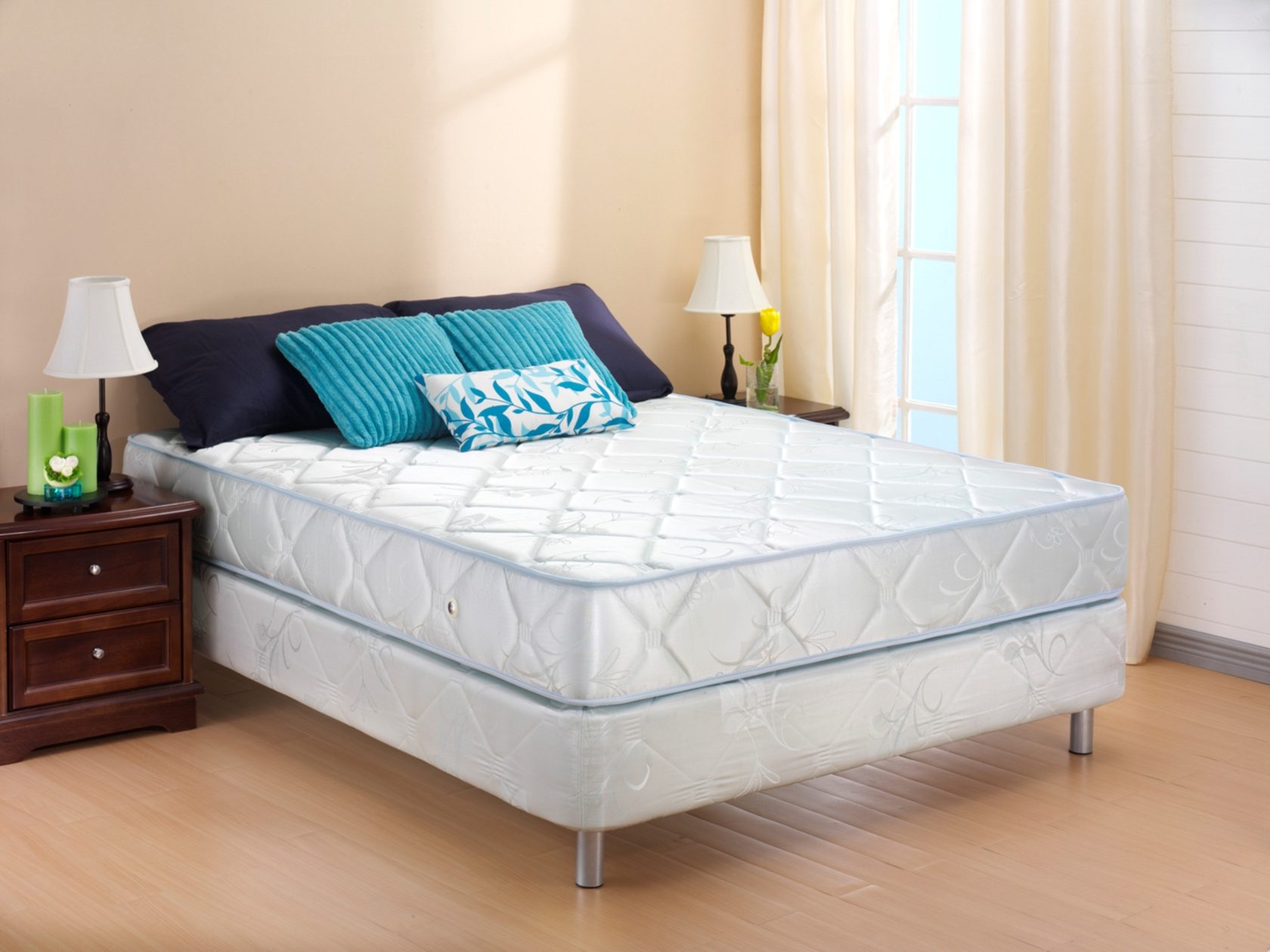When it comes to choosing a mattress, two of the most popular options are memory foam and innerspring mattresses. Each type has its own unique characteristics, benefits, and drawbacks. Understanding these differences can help you make an informed decision that best suits your sleeping preferences and needs. In this article, we’ll explore the key differences between memory foam and innerspring mattresses, focusing on their construction, comfort, support, durability, and price.
1. Construction
Memory Foam Mattresses
Memory foam mattresses are constructed primarily from viscoelastic foam, a material known for its ability to conform to the body’s shape. The foam softens in response to body heat and pressure, providing a customized sleeping surface. Typically, memory foam mattresses consist of multiple layers, including a dense support core at the bottom and softer, more responsive foam layers on top.
- Top Layer: The top layer is usually made of gel-infused or open-cell memory foam to improve breathability and temperature regulation.
- Support Core: The base layer is denser and provides the primary support for the mattress.
Innerspring Mattresses
Innerspring mattresses, on the other hand, are constructed with a network of metal coils or springs. These coils are usually made of steel and come in various configurations, such as Bonnell, pocketed, or offset coils. The springs provide the mattress with a supportive core, while comfort layers made of materials like foam, latex, or cotton are placed on top.
- Coil Types: The type of coils used can vary, with pocketed coils offering better motion isolation and Bonnell coils providing a firmer feel.
- Comfort Layers: These layers are often thinner than those found in memory foam mattresses and are primarily designed to add comfort rather than contour to the body.
2. Comfort
Memory Foam Mattresses
Memory foam mattresses are renowned for their comfort and ability to relieve pressure points. The foam contours closely to the body, distributing weight evenly and reducing stress on pressure points like the hips and shoulders. This contouring effect often gives a “hugging” sensation, which can be particularly beneficial for side sleepers or those with joint pain.
- Pressure Relief: Memory foam excels at relieving pressure, making it a good choice for those with chronic pain or discomfort.
- Motion Isolation: Memory foam is also excellent at absorbing motion, making it ideal for couples who share a bed, as it minimizes disturbances from a partner’s movements.
Innerspring Mattresses
Innerspring mattresses generally offer a firmer, more traditional feel compared to memory foam. The coil system provides responsive support, which some sleepers prefer for ease of movement and a more “bouncy” sensation. However, the comfort level can vary depending on the type of coils and the thickness of the comfort layers.
- Firmness Options: Innerspring mattresses come in a wide range of firmness levels, catering to different preferences.
- Breathability: Due to their construction, innerspring mattresses tend to sleep cooler than memory foam, as the open structure allows for better air circulation.
3. Support
Memory Foam Mattresses
Memory foam mattresses provide support by conforming to the body’s shape, which helps maintain proper spinal alignment. The support is more evenly distributed across the mattress, which can be beneficial for those with back problems. However, some people may find that memory foam lacks the robust support of an innerspring mattress, particularly if the foam is too soft.
- Spinal Alignment: Memory foam supports natural spinal alignment, which can reduce the risk of back pain.
- Longevity: Over time, memory foam can lose its elasticity, potentially leading to sagging if not properly maintained.
Innerspring Mattresses
Innerspring mattresses offer more traditional support through the coil system. The springs provide a sturdy base that can support heavier body weights without sagging. The level of support can be adjusted based on the coil count, thickness, and type.
- Edge Support: Innerspring mattresses typically offer better edge support, which can be advantageous for those who sit or sleep near the edge of the bed.
- Durability: High-quality innerspring mattresses can be very durable, with the coils maintaining their shape and support over time.
4. Durability
Memory Foam Mattresses
The durability of memory foam mattresses depends on the density and quality of the foam. You can check different mattress from Mattress Liquidators. Higher-density foams tend to last longer but may also retain more heat. Memory foam mattresses generally last between 7 to 10 years, although this can vary based on usage and care.
- Indentations: Over time, memory foam can develop indentations or sagging, especially in areas where the sleeper typically lies.
- Care: Rotating the mattress regularly can help extend its lifespan.
Innerspring Mattresses
Innerspring mattresses are known for their durability, especially those with high-quality coils and construction. The average lifespan of an innerspring mattress is around 7 to 8 years, but this can vary widely depending on the materials used and the quality of the coils.
- Sagging: Low-quality innerspring mattresses may sag more quickly, especially if the coil system is not robust.
- Maintenance: To prolong the life of an innerspring mattress, regular flipping and rotation are recommended.
5. Price
Memory Foam Mattresses
Memory foam mattresses generally tend to be more expensive than innerspring mattresses, particularly those made with higher-quality foams or additional features like cooling gel layers. However, the price can vary widely based on brand, foam density, and thickness.
- Cost: Memory foam mattresses typically range from mid to high-end in terms of cost, with premium models reaching several thousand dollars.
- Value: The investment in a memory foam mattress can be worthwhile for those seeking superior comfort and pressure relief.
Innerspring Mattresses
Innerspring mattresses are often more affordable than memory foam options, although high-end models can still be quite expensive. The price is largely determined by the type and quality of the coil system and the materials used in the comfort layers.
- Affordability: Innerspring mattresses are generally more budget-friendly, making them a popular choice for those seeking value without sacrificing support.
- Range: The wide range of options means that there are affordable choices as well as luxury models available.
Conclusion: Which Mattress is Right for You?
The decision between a memory foam and an innerspring mattress ultimately comes down to personal preference, sleeping style, and budget. Memory foam mattresses offer exceptional comfort, pressure relief, and motion isolation, making them ideal for those with joint pain or who share a bed. Innerspring mattresses, on the other hand, provide a more traditional feel, better breathability, and strong support, making them a great option for those who prefer a firmer surface or are on a tighter budget.




